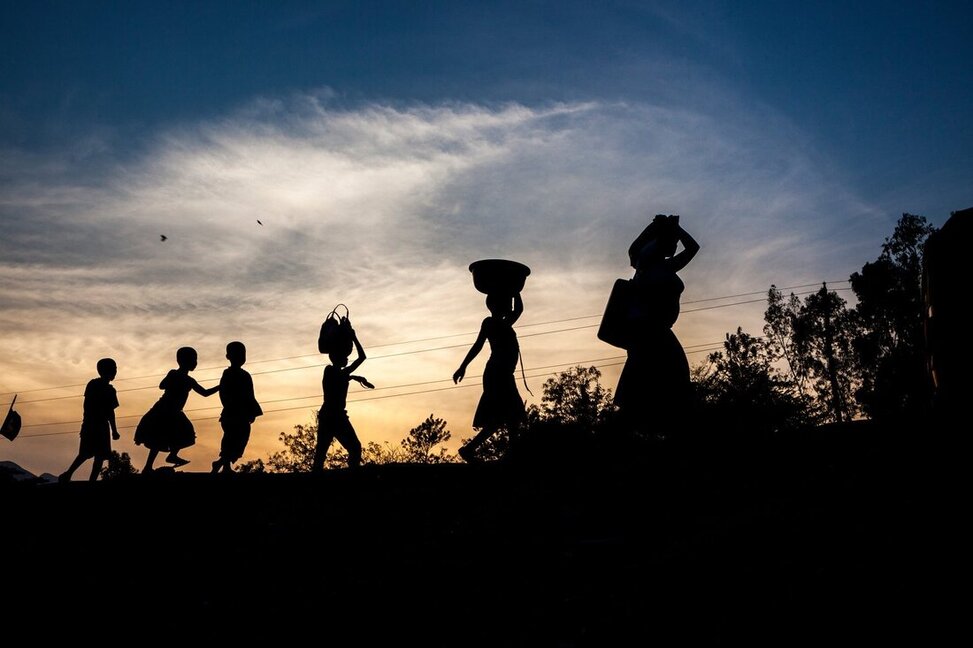|
The Melilla fence: one of the realities of our migration policiesThe Melilla fence: one of the disgraces of migration policies Last Friday 24 June saw a desperate attempt by many people to cross the Melilla fence, which was met with force by the Moroccan and Spanish authorities. The official death toll of the mass attempt to jump the fence of the Spanish enclave of Melilla from the Moroccan town of Nador is 23, although some NGOs put the figure at 37. 18 migrants and one member of the Moroccan security forces are still hospitalised. The Melilla fence is one of the many existing walls on the external borders of the European Union to prevent the entry of migrants. In itself it is an act of violence against people and a violation of human rights and human dignity. While in Northern Europe the doors of solidarity are opened to refugees, in the South it seems that these people do not deserve this name and their hope for a life without conflict is violently closed. This is a situation that should not leave us indifferent. Undoubtedly, the indiscriminate use of violence and systematic repression should not be the content and application of migration policies, which are promoted by the EU, but should rather delve into the causes of the humanitarian drama against which violence is used.
0 Comments
On 22 June, eastern Afghanistan suffered the terrible consequences of a powerful earthquake that left at least 1,000 people dead and 1,500 injured. It is the deadliest earthquake to hit the country in two decades. The earthquake has reached a magnitude 6.1, particularly affecting the province of Paktika, an area bordering Pakistan, where people live a precarious life.
These events, while considered disasters, are not attributed to the anthropogenic force of climate change, but to geological forces. They are in any case environmental disruptions that have serious consequences for human populations, in terms of loss of life and internal displacement. It should not be forgotten that Afghanistan, one of the poorest countries in the world, has been in a critical economic and social situation for decades and has been under Taliban rule since last August, 2021. Ninety-seven percent of the population is on the brink of poverty and people are unable to feed themselves. Many of them depend on subsistence agriculture, which is indeed impacted by the effects of climate change. In addition, the situation of women's rights is very worrying: with the Taliban in power, women were ordered to cover their faces in public and teenage girls were not allowed to go to school. Afghanistan is a country prone to earthquakes, as it is located in a seismically active region. According to the UN Office for the Coordination of Humanitarian Affairs, more than 7,000 people have been killed by earthquakes in the country in the last 10 years. The earthquake undoubtedly aggravates the pre-existing humanitarian situation, especially for internally displaced persons in Afghanistan, who have been displaced by the conflict. According to Amnesty International (20 June 2022), more than six million Afghans are currently displaced from their homes or country by conflict, violence and poverty. Of these, 3.5 million are internally displaced and 2.6 million live in other countries, mainly Pakistan and Iran. In 2021, there were 723,000 internal displacements by conflict and violence in Afghanistan, according to the latest Internal Displacement Monitoring Centre report (IDMC, 2022). Disasters of geological or man-made origin require an urgent, reactive and preventive humanitarian response, but also humanitarian contexts of human rights fragility, which determine the vulnerabilities and resilience of populations. According to the IDMC (2022), women and children represent the 80 per cent of the new displacements in 2021 and their situation is their situation is very worrying, due to the restrictions of rights, in freedom of movement, economic participation and access to basic services. Displaced women are also particularly vulnerable to gender-based violence and forced and early marriage. It will certainly not be possible to avoid neither geological disasters nor climate disasters, given the path of global temperature increases, but we can begin to prepare the most exposed and vulnerable populations. The international community, especially in the Global North, has the responsibility to respond to humanitarian emergencies. Let us hope so. |
Susana BorràsMarie Skłodowska-Curie Fellow (H2020-MSCA-IF-2020)nº101031252 Archives
March 2023
|
Proudly powered by Weebly




 RSS Feed
RSS Feed